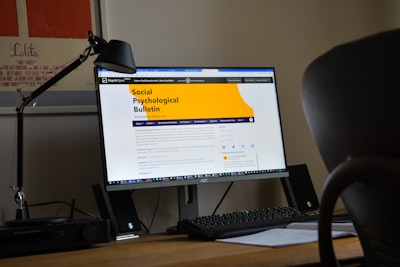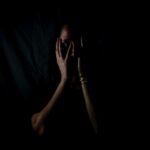- Hallucinations, dreams, and sleep-related perceptions are all non-veridical perceptions that occur during sleep or in the waking state.
- The main differences between them are the perception of reality, involvement of neural networks, and potential causes such as Parkinson’s disease, schizophrenia, and drugs.
- Hallucinations in dreams can represent deeper psychological or emotional issues, while hallucinations as a result of drug use can lead to impaired judgment, psychological distress, flashbacks, substance-induced psychosis, and physical health risks.
- Hallucinations can occur in ordinary situations, medical conditions like Parkinson’s disease and Charles Bonnet Syndrome, and as a result of sensory deprivation. In some cases, they can serve as a coping mechanism or a source of reassurance.
Understanding the distinction between hallucinations, dreams, and sleep-related perceptions is crucial for gaining insight into these intriguing phenomena and their impact on our lives. While they may share some similarities, there are also important differences that set them apart. Let’s take a closer look at these differences and explore how they manifest in various conditions such as Parkinson’s disease and schizophrenia.
Differentiating Hallucinations, Dreams and Sleep-related Perceptions

1. Similarities and Differences
Hallucinations, dreams, and sleep-related perceptions all involve non-veridical perceptions that occur either during sleep or in the waking state. However, there are key distinctions that help us differentiate between them.
Perception of Reality
One of the main differences lies in the perception of reality. Hallucinations are discrete experiences that are overlaid on top of veridical perceptions, creating a sense of confusion between what is real and what is not. In contrast, sleep-related perceptions, such as dreams and hypnagogic-hypnopompic experiences, are immersive and largely cut off from reality. They exist in a separate world, distinct from the waking state.
Involvement of Neural Networks
Another significant difference is the involvement of neural networks. Hallucinations typically engage a broader range of neural networks compared to sleep-related perceptions. The processing of hallucinations often extends to regions associated with cognition, perception, and sensory integration, reflecting an integration with the ongoing flow of thoughts. Sleep-related perceptions, on the other hand, mainly involve a subset of neural networks, reflecting perceptual signals processed in a more closed-loop circuit. [1]
Parkinson’s Disease and Schizophrenia
In Parkinson’s disease, visual hallucinations are predominant, although auditory hallucinations and hallucinations of sensed presence can also occur. These hallucinations are often perceived to be real and unpleasant but not frightening. The underlying neural mechanisms involve disruptions in the dopaminergic and cholinergic systems.
In schizophrenia, hallucinations primarily manifest as auditory perceptions, such as hearing voices. However, hallucinations in other sensory modalities can also occur. Unlike sleep-related perceptions, hallucinations in schizophrenia are often mistaken for veridical perceptions and are laden with affect. They are believed to originate from external sources, and there is a strong association with anomalies in brain activation and neurotransmitter action.
2. Perception of Reality in Hallucinations and Sleep-Related Perceptions
A significant aspect to consider is the perception of reality in hallucinations and sleep-related perceptions. In hallucinations, there is often a blending of real and unreal experiences, creating a sense of confusion and distortion. This blending can lead individuals to question the validity of their own perceptions and can be a source of distress.
In sleep-related perceptions, however, the individual is typically aware that they are experiencing a non-veridical perception. In the case of dreams, this awareness usually occurs upon waking, while hypnagogic and hypnopompic experiences are recognized as distinct from reality. This distinction allows individuals to navigate and interpret these perceptions without significant distress.
3. The Importance of Understanding Hallucinations and Sleep-Related Perceptions
Understanding the differences between hallucinations, dreams, and sleep-related perceptions is crucial for promoting mental well-being and dispelling stigmas associated with these phenomena. Recognizing the unique characteristics and neural mechanisms underlying each experience can help individuals better comprehend their own perceptions.
By studying hallucinations, dreams, and sleep-related perceptions, researchers have made significant strides in understanding the underlying neurobiological processes. This knowledge has the potential to destigmatize hallucinations, provide valuable insights into neurological disorders such as Parkinson’s disease and schizophrenia, and guide the development of targeted treatment approaches.
Psychological Interpretations of Hallucinations

Hallucinations in dreams are not just random occurrences, but they often hold symbolic meaning and can provide insights into our subconscious thoughts and emotions. They are a form of the dream process, where our minds create vivid sensory experiences that feel real even though they are not.
1. Symbolism and Meaning of Hallucinations in Dreams
Hallucinations in dreams can represent deeper psychological or emotional issues that we may not be fully aware of during our waking state. For example, seeing a snake in a dream may symbolize fear or danger, while seeing a loved one who has passed away may indicate a desire for connection or unresolved grief. These hallucinations allow our subconscious mind to communicate with us and bring certain issues or emotions to our attention.
2. Hallucinations as a Form of the Dream Process
During sleep, our minds are free to explore various thoughts and emotions without the constraints of reality. Hallucinations in dreams are a natural part of this process, as our brain creates sensory experiences that feel real. These hallucinations can range from simple visual images to complex scenes and conversations with others.
3. Emotions and Drives Triggering Hallucinations
Hallucinations in dreams can also be triggered by strong emotions or unconscious drives. For example, feelings of guilt or insecurity may manifest as hallucinations in a dream, allowing us to confront and process these emotions. Similarly, repressed desires or fears may emerge as hallucinations, helping us gain awareness and understanding of these [2] underlying drives.
4. Use of Hallucinations as a Tool for Self-Understanding
Hallucinations in dreams can serve as a valuable tool for self-understanding and personal growth. By exploring the meaning and symbolism behind these hallucinations, we can gain insights into our own thoughts, emotions, and desires. It is important to approach these experiences with curiosity and an open mind, recognizing that they are a product of our subconscious mind and can provide valuable insights into our own psyche.
Hallucinations and Drug Use

Hallucinations are often associated with drug use, particularly with drugs that are known to cause hallucinogenic effects such as LSD, cannabis, and psilocybin. These drugs can alter perceptions and create profound distortions in an individual’s reality, leading to hallucinations.
1. How Drugs such as LSD, Cannabis, Psilocybin Induce Hallucinations
Drugs like LSD, cannabis, and psilocybin are classified as hallucinogens because they can produce hallucinatory effects. These drugs interact with specific receptors in the brain, altering the way sensory information is processed and perceived. They can affect neurotransmitters like serotonin, which play a key role in mood regulation and sensory perception.
When these drugs are consumed, they can cause changes in sensory perception, leading to hallucinations. Visual hallucinations, auditory hallucinations, and even tactile hallucinations – the sensation of feeling something that isn’t there – can occur. These hallucinations may be vivid, intense, and appear very real to the individual experiencing them.
2. The Potential Dangers and Long-Term Effects of Drug-Induced Hallucinations
While hallucinations can be a fascinating and mind-altering experience for some, they can also come with potential dangers and long-term effects. Some of the risks include:
- Impaired Judgment
Hallucinations can impair an individual’s ability to make sound judgments and decisions. They may be more prone to engaging in risky behaviors or putting themselves in dangerous situations. - Psychological Distress
Hallucinations can be distressing and overwhelming, leading to anxiety, panic attacks, and paranoia. These psychological effects can be long-lasting and impact an individual’s overall well-being. - Flashbacks
Some individuals may experience flashbacks, which are the recurrence of hallucinatory experiences even after the drug has worn off. These flashbacks can occur without warning and can be unsettling and disruptive to daily life. - Substance-Induced Psychosis
In some cases, drug-induced hallucinations can trigger or worsen underlying mental health conditions, such as bipolar disorder or schizophrenia. This can lead to episodes of substance-induced psychosis, characterized by delusions or hallucinations that remove an individual from reality. - Physical Health Risks
While drug-induced hallucinations may not directly cause physical harm, the use of hallucinogenic drugs can carry other risks to a person’s physical health. These risks can include impaired coordination, increased heart rate, respiratory distress, and accidents or injuries due to impaired judgment.
It’s important to note that not everyone who uses hallucinogenic drugs will experience hallucinations, and the occurrence of hallucinations can vary greatly depending on factors such as dosage, individual susceptibility, and the environment in which the drugs are used.
If you or someone you know is experiencing drug-induced hallucinations or any negative effects from drug use, it is important to seek professional help and support.
3. Providing Support and Seeking Help
If you or someone you know is struggling with drug-induced hallucinations, it is important to seek help from a healthcare professional, such as a doctor or therapist. They can provide guidance, support, and appropriate treatment options to address the underlying issues and help manage the hallucinations.
It is also crucial to have a strong support system in place, whether it be from family, friends, or support groups. These individuals can offer understanding, empathy, and encouragement during the recovery process.
Common Causes and Types of Hallucinations

Hallucinations, defined as false perceptions of objects or events, can occur in a variety of situations and conditions. While they are often associated with mental health disorders like schizophrenia, hallucinations can also occur in ordinary situations, medical conditions, and as a result of sensory deprivation. Understanding the different types and causes of hallucinations can help us better grasp their occurrence and significance.
1. Hallucinations in Ordinary Situations
Hallucinations are not limited to individuals with mental illness or certain medical conditions. In fact, many people may experience hallucinations in ordinary situations. For example, falling asleep or waking up can sometimes lead to hypnagogic or hypnopompic hallucinations, which are vivid sensory experiences that occur during the transitions between wakefulness and sleep. These hallucinations can include visual, auditory, or tactile sensations and are generally considered normal variations in the sleep-wake cycle.
Similarly, sensory deprivation, such as being blindfolded or experiencing a lack of external stimulation, can trigger hallucinations. This is due to the brain’s tendency to create its own sensory input when deprived of external stimuli. In situations like prolonged solitude, extended periods without sensory stimulation, or being in an environment with minimal sensory input, hallucinations may occur as a way for the brain to fill the void.
2. Hallucinations in Medical Conditions – Parkinson’s Disease and CBS
Hallucinations can also be symptomatic of certain medical conditions. For example, individuals with Parkinson’s disease may experience visual hallucinations as a result of changes in the brain caused by the disease. These hallucinations are often complex and involve seeing people or objects that are not there. The exact underlying mechanism is not fully understood, but it is thought to involve the interaction of various neurotransmitters in the brain.
Another medical condition associated with hallucinations is Charles Bonnet Syndrome (CBS). CBS primarily affects individuals with visual impairments, such as those with macular degeneration. It is characterized by complex visual hallucinations that the person is fully aware are not real. [3] These hallucinations can range from simple shapes and colors to detailed scenes and figures. CBS is believed to occur due to the brain’s attempt to compensate for the loss of visual input by generating its own visual imagery.
3. Sensory Deprivation and Hallucinations
Sensory deprivation, whether self-imposed or the result of certain situations, can induce hallucinations. When the brain is deprived of sensory input, such as through blindfolding or isolation, it may create its own sensory experiences. These hallucinations can encompass various sensory modalities, including visual, auditory, and tactile sensations. They often occur as a response to the brain’s attempt to fill in the absence of external cues.
4. The Role of Hallucinations in Coping Mechanisms and Reassurance
In some cases, hallucinations can serve as a coping mechanism or a source of reassurance. For example, individuals who have recently lost a loved one may experience hallucinations where they see or hear the deceased person. These hallucinations, although not real, can offer comfort and provide a sense of connection or closure for the grieving individual. Similarly, individuals facing extreme physical or emotional stress, such as during periods of trauma or high fever, may experience hallucinations as a way to cope with the challenging circumstances.
It is important to note that hallucinations should not be dismissed or disregarded based solely on their cause or context. While hallucinations in ordinary situations or as part of the grieving process may be relatively common and benign, hallucinations associated with certain medical conditions or psychological disorders may require medical attention and treatment. If you or a loved one is experiencing hallucinations that are distressing, persistent, or interfering with daily functioning, it is important to seek professional help to determine the underlying cause and receive appropriate care.
If you or someone you know experiences hallucinations during sleep or in the waking state, it’s important to understand that these perceptions are not necessarily harmful or indicative of a serious condition. However, if they begin to interfere with daily life or cause distress, it is recommended to seek professional help. It’s also important to keep in mind that hallucinations can be influenced by various factors such as medication, substance use, and medical conditions. Knowing the potential causes and seeking appropriate treatment can help manage symptoms and improve overall wellbeing. Remember, you are not alone and there is support available for those who need it.
References
[1] What Is the Link Between Hallucinations, Dreams, and …
[2] Hallucinations: Etiology and clinical implications – PMC – NCBI
[3] Hallucinations: Causes, Types, Diagnosis, Treatment










Leave a Reply